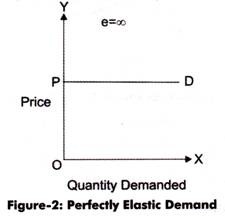Relatively elastic demand is a term used in economics to describe a situation where the quantity of a good or service that consumers are willing to purchase changes significantly in response to changes in the price of the good or service. This occurs when the good or service has close substitutes, or when consumers have a strong preference for the good or service but are able to adjust their consumption patterns in response to changes in price.
One of the key characteristics of relatively elastic demand is that it is responsive to changes in price. When the price of a good or service increases, consumers will be less likely to purchase it, and they may instead choose to purchase a substitute or reduce their overall consumption of the good or service. Conversely, when the price of a good or service decreases, consumers will be more likely to purchase it, and they may increase their overall consumption of the good or service.
The degree of elasticity, or the extent to which demand changes in response to price changes, can vary widely among different goods and services. Some goods and services may have very elastic demand, meaning that even small changes in price can result in significant changes in the quantity demanded. Other goods and services may have relatively inelastic demand, meaning that changes in price have a smaller impact on the quantity demanded.
One factor that can influence the elasticity of demand is the availability of substitutes. When there are many close substitutes for a good or service, demand is likely to be more elastic, as consumers can easily switch to a different product if the price of the original good or service increases. On the other hand, when there are few or no close substitutes, demand is likely to be more inelastic, as consumers may have few alternatives to the original good or service.
Another factor that can affect the elasticity of demand is the importance of the good or service to consumers. Some goods and services are considered necessities, and consumers may be willing to pay a higher price for them even if the price increases. In these cases, demand may be relatively inelastic. Other goods and services may be considered luxuries, and consumers may be more willing to reduce their consumption or switch to substitutes if the price increases. In these cases, demand may be relatively elastic.
In general, relatively elastic demand can have important implications for businesses and policymakers. For businesses, understanding the elasticity of demand for their products can help them make informed decisions about pricing and marketing strategies. For policymakers, understanding the elasticity of demand for certain goods and services can inform policy decisions related to taxes, subsidies, and other price-influencing measures.







